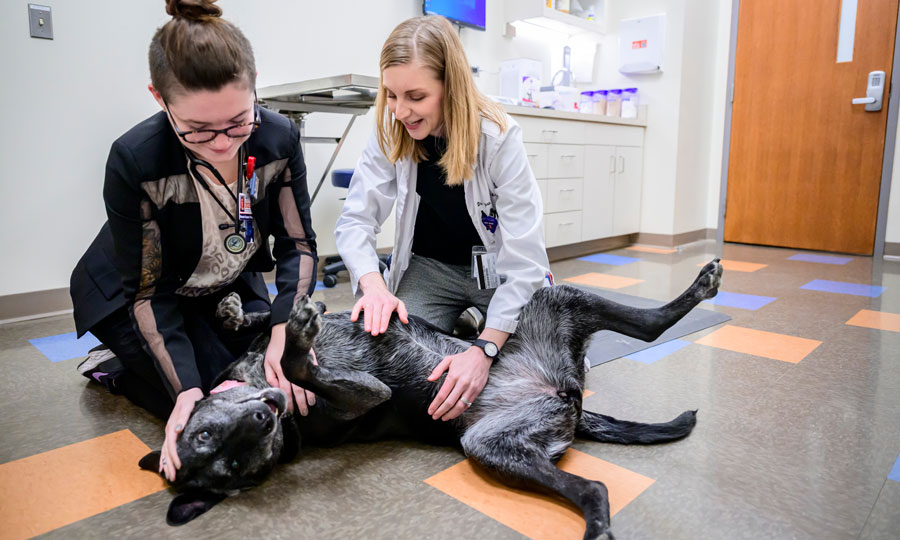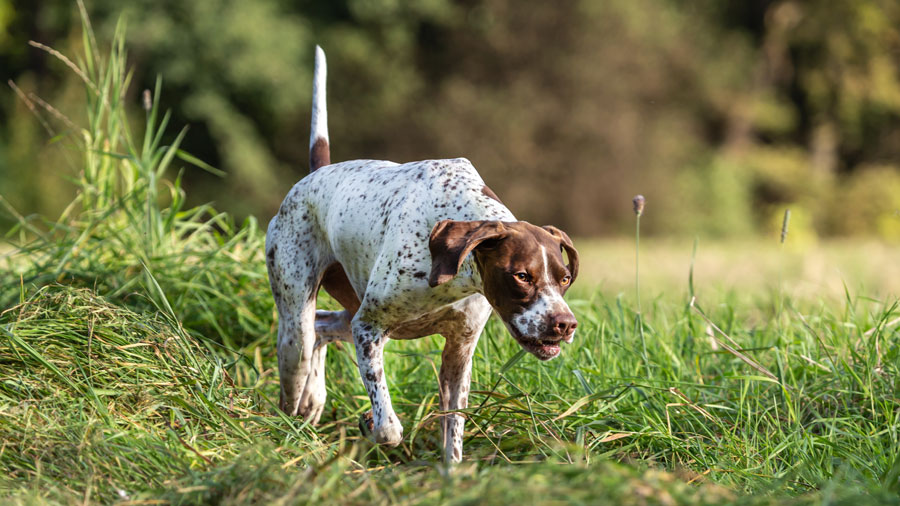Tips for Keeping Geriatric Pets Healthy
Thanks to advancing medicine, pets live longer than ever before. However, with these added years of valuable life come more age-related health problems.
In her role as a rehabilitation specialist at the University of Illinois Veterinary Teaching Hospital in Urbana, Kimberly Knap sees many geriatric pets—including the group of golden retrievers shown above that visited on Wednesdays for underwater treadmill therapy. She offers some helpful tips to improve older pets’ quality of life.
“Keeping a relationship with your veterinarian is important,” Knap says. “Basic blood work every 6 to 12 months is key to monitoring organ function and catching problems such as infections before they become too severe to treat.”
Monitoring your pet at home for general health problems can allow for earlier detection as well. Some signs that may indicate a problem include increased water consumption, poor gum/tongue color (these tissues should be a healthy pink), changes in behavior or sleeping habits, changes in vision or hearing, coughing, and skin problems.
Keep ‘Em Moving
“Don’t just assume that the changes you see in your geriatric pets are typical age-related changes,” Knap warns. “Sometimes these changes arise from conditions that can be treated.”
Also look for orthopedic and neurologic changes, such as stiffness, lameness, or looking confused in familiar settings. Once again, don’t simply write off these occurrences as part of untreatable “old dog syndrome.”
Exercise is an important part of an older pet’s life. “We used to say ‘let the older dog lie,’ but now we say ‘keep him moving,’” says Knap. Daily exercise is beneficial, especially in the face of arthritis.
“Arthritis is a progressing condition caused by destruction of cartilage in joints. As cartilage erodes, bony structures begin to rub against each other and cause pain,” Knap explains. As in people, pets with arthritis may be slow moving in morning, have a stiff gait, and be losing muscle mass.
Although arthritis can’t be fully prevented, the goal is to keep these pets as strong and as mobile as possible. In both dogs and cats that are carrying extra pounds, weight loss can significantly reduce lameness associated with arthritis. Acupuncture has also been shown to be an effective way to treat pain for some pets with arthritis.
Diversions, Adaptations, Diet
![[geriatric pets - cat toy]](https://vetmed.illinois.edu/wp-content/uploads/2021/04/pc-knap-cat-toy.jpg)
Mental stimulation is also crucial for keeping your pet’s mind sharp. “For dogs, we recommend challenging toys, hide and seek, learning new tricks, and possibly getting a friend,” says Knap. “For cats, you can use feathers on poles, toilet paper rolls, bubble machines, foil balls, outside pens, and window traffic to keep their minds engaged.”
In any case, make sure whatever toys you give your pets do not end up in their stomachs!
You might also consider making some changes around the house to help your old friend out. Some popular items on the market are well-padded cushions for sleeping, ramps or slings to help the pet climb stairs, elevated food bowls, and traction devices to prevent falls on slick floors.
Finally, a well-balanced diet is an important component of an older pet’s health regimen. “Diets for geriatric pets are formulated with lower fat, phosphorus, protein, and calories and increased fiber,” says Knap. “You can ask your veterinarian for a recommendation for your specific pet.”
Junk food and table scraps are a definite no. Not only do these foods lead to weight gain, which predisposes pets to arthritis, but fatty foods can also damage internal organs which could lead to a rapid decline in health.
“The overall goal for old pets is to keep them happy, healthy, and active,” Knap emphasizes.
To learn more about caring for your older pet, contact your local veterinarian.
By Danielle Engel

![[Golden Wednesdays at Illinois veterinary rehab]](https://vetmed.illinois.edu/wp-content/uploads/2021/04/pc-knap-goldens.jpg)


